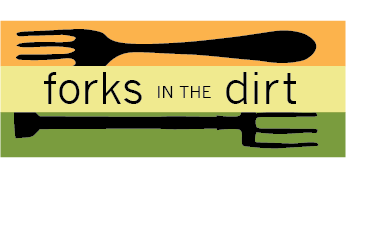This is the Spring to get growing a vegetable garden!
With so much up in the air dealing with COVID19, I am soothed knowing the ground beneath my feet is here for me.
Gardening can be a great escape that also keeps you:
going outside and getting sun,
moving while the gyms are closed,
feeding you healthy food,
…which all seem like pretty good reasons to go ahead and plant a (bigger) garden this Spring!
Let’s Dig In!

Victory Gardens were a sign of national patriotism back in the days between WWI and WWII.
Even schools had gardens, which I am happy to say was already well on it’s way to making a comeback! This school garden influx is tied with the national push for Farm to School eating in school lunches!


Those home gardens focused on quick to perish or easy to store at home foods. Home Grown veggies could be found in over half of American’s lawns for a few years! To put that into numbers, “by 1944, an estimated 20 million victory gardens produced roughly 8 million tons of food—which was the equivalent of more than 40 percent of all the fresh fruits and vegetables consumed in the United States,” according to the History Channel.

The Agricultural Departments also urged us to keep our chickens, ‘two for each family member’ and I’d be happy to help you get started with that too 😉 I’ve got an article, Chickens in the Hood all about that!
During these uncertain times, I simply feel better knowing I am doing something (anything) to prepare and plan for the future. Of course, I already loved growing food, so growing more makes sense. For those of you not used to digging in and planting there are a few tips to get you planting a successful garden.

Basic Garden Tips
- Plant what you will eat.
- Plant in the sun, near water if possible.
- Fence it in, because critters want to eat fresh veggies too.
- Add compost, good soil matters.
- Grow Vertically to keep the garden footprint small.
Plant Diversity

Consider planting a few fast growing crops like greens (lettuce, spinach) and more expensive herb plants- which also are things that you need to keep going to a store to keep buying ‘fresh’. Beets, radishes, kohlrabi and kale are all ready to harvest in 45 days. Bush beans are another crop that is ready in 60 days, and beans are truly one of the easiest plants to grow!
Or try something like cucumbers that most families love- and if you get too many, quick refrigerator pickles keep well- or go all out and make homemade pickles and slowly become just as addicted to homegrown as I am 😉

There are also lots of plants to grow inside, from salad gardens to microgreens. This is also still time to start some seeds indoors, tomatoes, cucumbers, broccoli, kale. Only onions, celery and peppers are really past their prime for starting indoors.

The satisfaction of knowing you’ve got a plan feels almost as good it will to pick that first ripe green bean, carrot or tomato later this summer. If you want to really go for it you can plant two crops in a row of many crops (yes even in Minnesota). This technique is called succession planting.
Why Garden
For most of us, gardening is a leisure activity, and I think there’s a very good reason gardening ahs been on the rise right along side technology use and stress- because it decreases stress and gets us into the real world. In real time.

Right now, with so many things are out of our control, this is one way to work with the rhythm of nature and take back a little control over our food in a way that keeps us healthy on so many levels!
Watch my FREE YOUTUBE Video on Garden Planning
Get a Garden Plan

So, I urge you to start a garden, even a tomato in a pot, a few feet of climbing beans or a salad garden this spring. If you want to learn more about putting in a sustainable vegetable garden, I’ve got an array of in person and online classes available, check my SHOP to register.

But keep in mind that plants want to grow, that’s their job! If you give them soil, sun, water and protection from animals, the plants will reward you for your help!
Dig In!
-Michelle















